-
Executive Summary
-
Market Introduction
-
2.1
-
Market Definition
-
Scope of the
-
Study
-
List of Assumptions
-
Markets Structure
-
3
-
Market Research Methodology
-
Research
-
Process
-
Primary Research
-
Secondary Research
-
3.4
-
Market Size Estimation
-
Forecast Model
-
Market Dynamics of the Global Photovoltaic Materials
-
Market
-
Introduction
-
Drivers
-
Restraints
-
Opportunities
-
4.5
-
Challenges
-
Trends/Technology
-
Market Factor Analysis of the Global Photovoltaic
-
Materials Market
-
Supply Chain Analysis
- Manufacturers/Producers
- Distributors/Suppliers
-
5.1.1
-
Raw Type Suppliers
-
5.1.4
-
End Users
-
Porter’s
- Threat of New
- Bargaining Power of Buyers
- Bargaining Power of Suppliers
- Threat of Substitutes
-
Five Forces Analysis
-
Entrants
-
5.2.5
-
Intensity of Competitive Rivalry
-
Pricing
-
Analysis
-
Global Photovoltaic Materials
-
Market, by Type
-
Introduction
-
Thin
- Market
- Market Estimates &
-
Film
-
Estimates & Forecast, 2023-2032
-
Forecast, by Region, 2023-2032
-
Crystalline Materials
- Market Estimates
- Market Estimates & Forecast,
-
& Forecast, 2023-2032
-
by Region, 2023-2032
-
Others
- Market Estimates & Forecast,
- Market Estimates & Forecast, by Region, 2023-2032
-
Global Photovoltaic Materials Market, by Material
-
7.1
-
Introduction
-
Silicon Based
- Market
- Market Estimates & Forecast,
-
Estimates & Forecast, 2023-2032
-
by Region, 2023-2032
-
7.2.2.1.1
-
Market Estimates & Forecast, 2023-2032
-
& Forecast, by Region, 2023-2032
-
7.2.2.2.2
-
Market Estimates & Forecast, by Region, 2023-2032
-
Non-Silicon
- Market Estimates & Forecast, 2023-2032
-
Based
-
7.3.2
-
Market Estimates & Forecast, by Region, 2023-2032
-
Telluride (CdTe)
-
7.3.2.2
-
Copper Indium Gallium Diselenide (CIGS)
-
& Forecast, 2023-2032
-
by Region, 2023-2032
-
7.3.2.3.1
-
Market Estimates & Forecast, 2023-2032
-
& Forecast, by Region, 2023-2032
-
7.3.2.4.1
-
Market Estimates & Forecast, 2023-2032
-
& Forecast, by Region, 2023-2032
-
Cadmium
-
Market Estimates & Forecast, 2023-2032
-
Market Estimates & Forecast, by Region, 2023-2032
-
Market Estimates
-
Market Estimates & Forecast,
-
Gallium Arsenide (GaAs)
-
Market Estimates
-
Others
-
Market Estimates
-
Global Photovoltaic
-
Materials Market, by End-Use
-
Introduction
- Market Estimates & Forecast,
- Market Estimates & Forecast, by Region, 2023-2032
-
8.2
-
Residential
-
Commercial
- Market Estimates & Forecast,
- Market Estimates & Forecast, by Region, 2023-2032
-
Utility
- Market Estimates & Forecast,
- Market Estimates & Forecast, by Region, 2023-2032
-
Global Photovoltaic Materials Market, by Region
-
9.1
-
Introduction
-
North America
- Market Estimates
- Market Estimates &
- Market Estimates &
- US
- Canada
-
9.2.1
-
Market Estimates & Forecast, 2023-2032
-
& Forecast, by Type, 2023-2032
-
Forecast, by Material, 2023-2032
-
Forecast, by End-Use, 2023-2032
-
& Forecast, 2023-2032
-
& Forecast, by Material, 2023-2032
-
& Forecast, by Type, 2023-2032
-
& Forecast, by End-Use, 2023-2032
-
Europe
- Market Estimates & Forecast, 2023-2032
-
9.3.2
-
Market Estimates & Forecast, by Type, 2023-2032
-
9.3.3
-
Market Estimates & Forecast, by Material, 2023-2032
-
Estimates & Forecast, by Material, 2023-2032
-
Forecast, by Type, 2023-2032
-
Forecast, by End-Use, 2023-2032
-
Estimates & Forecast, by Type, 2023-2032
-
& Forecast, by End-Use, 2023-2032
-
Forecast, 2023-2032
-
9.3.8.2
-
Market Estimates & Forecast, by End-Use, 2023-2032
-
Germany
-
Market Estimates & Forecast, 2023-2032
-
Market Estimates & Forecast, by Type,
-
Market
-
Market Estimates & Forecast, by End-Use,
-
France
-
Market Estimates & Forecast, 2023-2032
-
Market Estimates &
-
Market Estimates & Forecast, by Material, 2023-2032
-
Market Estimates &
-
Italy
-
Market Estimates & Forecast,
-
Market
-
Market Estimates & Forecast, by Material, 2023-2032
-
Market Estimates
-
Spain
-
Market Estimates &
-
Market Estimates & Forecast, by Type, 2023-2032
-
Estimates & Forecast, by End-Use, 2023-2032
-
& Forecast, 2023-2032
-
by Material, 2023-2032
-
9.3.9.4
-
Market Estimates & Forecast, by Material,
-
Market
-
UK
-
Market Estimates
-
Market Estimates & Forecast, by Type, 2023-2032
-
Market Estimates & Forecast,
-
Market Estimates & Forecast, by End-Use, 2023-2032
-
9.3.10
-
Russia
-
9.3.10.1
-
Market Estimates & Forecast, 2023-2032
-
9.3.10.3
-
Market Estimates & Forecast, by Type,
-
Market Estimates & Forecast, by Material, 2023-2032
-
by End-Use, 2023-2032
-
9.3.11.2
-
Market Estimates & Forecast,
-
Poland
-
Market Estimates & Forecast,
-
Market Estimates & Forecast, by Type, 2023-2032
-
9.3.11.4
-
Market Estimates & Forecast, by Material,
-
Market Estimates & Forecast, by End-Use, 2023-2032
-
9.3.12
-
Rest of Europe
-
& Forecast, by Type, 2023-2032
-
& Forecast, by End-Use, 2023-2032
-
9.4.2
-
Market Estimates & Forecast, 2023-2032
-
Market Estimates
-
Market Estimates & Forecast, by Material, 2023-2032
-
Market Estimates
-
Asia-Pacific
- Market Estimates & Forecast, 2023-2032
-
Market Estimates & Forecast, by Type, 2023-2032
-
9.4.3
-
Market Estimates & Forecast, by Material, 2023-2032
-
9.4.4
-
Market Estimates & Forecast, by End-Use, 2023-2032
-
9.4.5
-
China
-
9.4.5.1
-
Market Estimates & Forecast, 2023-2032
-
& Forecast, by Material, 2023-2032
-
& Forecast, by Type, 2023-2032
-
& Forecast, by End-Use, 2023-2032
-
& Forecast, 2023-2032
-
& Forecast, by Material, 2023-2032
-
9.4.8.2
-
Market Estimates & Forecast, by Type, 2023-2032
-
Market Estimates
-
Market Estimates & Forecast, by End-Use, 2023-2032
-
India
-
Market Estimates & Forecast, 2023-2032
-
Market Estimates
-
Market Estimates & Forecast, by Material, 2023-2032
-
Market Estimates
-
Japan
-
Market Estimates
-
Market Estimates & Forecast, by Type, 2023-2032
-
Market Estimates
-
Market Estimates & Forecast, by End-Use, 2023-2032
-
Australia & New Zealand
-
Market Estimates & Forecast,
-
Market Estimates & Forecast, by Type, 2023-2032
-
9.4.8.4
-
Market Estimates & Forecast, by Material,
-
Market Estimates & Forecast, by End-Use, 2023-2032
-
9.4.9
-
Rest of Asia-Pacific
-
by Type, 2023-2032
-
9.4.9.3
-
Market Estimates & Forecast, 2023-2032
-
Market Estimates & Forecast,
-
Market Estimates & Forecast, by Material, 2023-2032
-
by End-Use, 2023-2032
-
9.5.2
-
Market Estimates & Forecast,
-
Middle East & Africa
- Market Estimates & Forecast, 2023-2032
-
Market Estimates & Forecast, by Type, 2023-2032
-
9.5.3
-
Market Estimates & Forecast, by Material, 2023-2032
-
9.5.4
-
Market Estimates & Forecast, by End-Use, 2023-2032
-
9.5.5
-
GCC
-
9.5.5.1
-
Market Estimates & Forecast, 2023-2032
-
& Forecast, by Material, 2023-2032
-
by Type, 2023-2032
-
9.5.6.3
-
Market Estimates & Forecast, by Type, 2023-2032
-
Market Estimates
-
Market Estimates & Forecast, by End-Use, 2023-2032
-
Israel
-
Market Estimates & Forecast, 2023-2032
-
Market Estimates & Forecast,
-
Market Estimates & Forecast, by Material, 2023-2032
-
by End-Use, 2023-2032
-
Forecast, 2023-2032
-
9.5.7.2
-
Market Estimates & Forecast,
-
North Africa
-
Market Estimates &
-
Market Estimates & Forecast, by Type, 2023-2032
-
Estimates & Forecast, by End-Use, 2023-2032
-
9.5.8
-
Turkey
-
Estimates & Forecast, 2023-2032
-
Forecast, by Material, 2023-2032
-
Estimates & Forecast, by Type, 2023-2032
-
& Forecast, by End-Use, 2023-2032
-
America
-
9.6.5.1
-
Market Estimates & Forecast, 2023-2032
-
& Forecast, by Material, 2023-2032
-
9.6.6
-
Mexico
-
9.6.6.1
-
Market Estimates & Forecast, 2023-2032
-
& Forecast, by Material, 2023-2032
-
9.6.7
-
Argentina
-
9.6.7.1
-
Market Estimates & Forecast, 2023-2032
-
& Forecast, by Material, 2023-2032
-
9.6.8
-
Rest of Latin America
-
by Type, 2023-2032
-
9.6.8.3
-
Market Estimates & Forecast, by Material,
-
Market
-
Market
-
Market Estimates & Forecast, by Type, 2023-2032
-
Market Estimates &
-
Market Estimates & Forecast, by End-Use, 2023-2032
-
Rest of Middle East & Africa
-
Market Estimates & Forecast,
-
Market
-
Market Estimates & Forecast, by Material, 2023-2032
-
Market Estimates
-
Latin
- Market Estimates & Forecast, 2023-2032
- Market Estimates & Forecast, by Type, 2023-2032
- Market Estimates & Forecast, by Material, 2023-2032
- Market Estimates & Forecast, by End-Use, 2023-2032
- Brazil
-
Market Estimates & Forecast, by Material, 2023-2032
-
by End-Use, 2023-2032
-
Market Estimates & Forecast,
-
Company Landscape
-
Introduction
-
10.2
-
Market Strategy
-
Key Development Analysis
-
(Expansion/Merger & Acquisition/Joint Venture/New Product Development/Agreement/Investment)
-
Company Profiles
-
Wacker
- Financial Updates
- Product/Business Segment Overview
- Strategy
- Key Developments
- SWOT Analysis
-
Chemie AG
-
11.1.1
-
Company Overview
-
E. I. du Pont
- Company Overview
- Product/Business
- Strategy
- SWOT Analysis
-
de Nemours and Company
-
11.2.2
-
Financial Updates
-
Segment Overview
-
11.2.5
-
Key Developments
-
Honeywell International Inc.
- Company Overview
- Financial Updates
- Strategy
- Key Developments
- SWOT
-
11.3.3
-
Product/Business Segment Overview
-
Analysis
-
Coveme SpA
- Company Overview
- Product/Business
- Strategy
- SWOT Analysis
- Company
- Financial Updates
- Strategy
- Key Developments
- SWOT
-
11.4.2
-
Financial Updates
-
Segment Overview
-
11.4.5
-
Key Developments
-
11.5
-
Mitsubishi Materials Corporation
-
Overview
-
11.5.3
-
Product/Business Segment Overview
-
Analysis
-
Targray
- Financial Updates
- Product/Business Segment Overview
- Strategy
- Key Developments
- SWOT Analysis
-
11.6.1
-
Company Overview
-
Hangzhou Foster
- Financial Updates
- Product/Business Segment Overview
- Strategy
- Key Developments
- SWOT Analysis
-
Applied Materials Co., Ltd
-
11.7.1
-
Company Overview
-
Ferrotec Corporation
- Company
- Financial Updates
- Strategy
- Key Developments
- SWOT
-
Overview
-
11.8.3
-
Product/Business Segment Overview
-
Analysis
-
JinkoSolar Holding Co., Ltd
- Company Overview
- Financial Updates
- Strategy
- Key Developments
- SWOT
-
11.9.3
-
Product/Business Segment Overview
-
Analysis
-
SunPower Corporation
- Company Overview
- Strategy
- Key Developments
-
11.10.2
-
Financial Updates
-
11.10.3
-
Product/Business Segment Overview
-
11.10.6
-
SWOT Analysis
-
Baoding Lightway Green Energy
- Financial Updates
- Product/Business Segment Overview
- Strategy
- SWOT Analysis
-
Technology Ltd
-
11.11.1
-
Company Overview
-
11.11.5
-
Key Developments
-
Shine Earth (Fujian) New Energy Co., Ltd
- Company Overview
- Strategy
- Key Developments
-
11.12.2
-
Financial Updates
-
11.12.3
-
Product/Business Segment Overview
-
11.12.6
-
SWOT Analysis
-
Power Solar Systems Ltd
- Company Overview
- Strategy
- Key Developments
-
11.13.2
-
Financial Updates
-
11.13.3
-
Product/Business Segment Overview
-
11.13.6
-
SWOT Analysis
-
Wuxi Suntech Power Co., Ltd
- Company Overview
- Financial Updates
- Key Developments
- SWOT Analysis
-
11.14.3
-
Product/Business Segment Overview
-
11.14.4
-
Strategy
-
Acciona
- Financial Updates
- Product/Business Segment Overview
- Strategy
- SWOT Analysis
-
Energía, SA
-
11.15.1
-
Company Overview
-
11.15.5
-
Key Developments
-
Conclusion
-
LIST OF TABLES
-
Global Photovoltaic Materials
-
Market, by Region, 2023-2032
-
North America:
-
Photovoltaic Materials Market, by Country, 2023-2032
-
Table 3
-
Europe: Photovoltaic Materials Market, by Country, 2023-2032
-
Table
-
Asia-Pacific: Photovoltaic Materials Market, by Country, 2023-2032
-
Middle East & Africa: Photovoltaic Materials
-
Market, by Country, 2023-2032
-
Latin America:
-
Photovoltaic Materials Market, by Country, 2023-2032
-
Table 7
-
Global Photovoltaic Materials Type Market, by Regions, 2023-2032
-
North America: Photovoltaic Materials Type Market, by
-
Country, 2023-2032
-
Europe: Photovoltaic Materials
-
Type Market, by Country, 2023-2032
-
Table10 Asia-Pacific:
-
Photovoltaic Materials Type Market, by Country, 2023-2032
-
Table11
-
Middle East & Africa: Photovoltaic Materials Type Market, by Country,
-
Table12 Latin America: Photovoltaic Materials
-
Type Market, by Country, 2023-2032
-
Table13 Global
-
Photovoltaic Materials Material Market, by Regions, 2023-2032
-
Table14
-
North America: Photovoltaic Materials by Material Market, by Country, 2023-2032
-
Table15 Europe: Photovoltaic Materials Material Market,
-
by Country, 2023-2032
-
Table16 Asia-Pacific: Photovoltaic
-
Materials Material Market, by Country, 2023-2032
-
Table17
-
Middle East & Africa: Photovoltaic Materials Material Market, by Country,
-
Table18 Latin America: Photovoltaic Materials
-
Material Market, by Country, 2023-2032
-
Table19 Global
-
Photovoltaic Materials End-Use Market, by Regions, 2023-2032
-
Table20
-
North America: Photovoltaic Materials End-Use Market, by Country, 2023-2032
-
Table21 Europe: Photovoltaic Materials End-Use Market,
-
by Country, 2023-2032
-
Table22 Asia-Pacific: Photovoltaic
-
Materials End-Use Market, by Country, 2023-2032
-
Table23
-
Middle East & Africa: Photovoltaic Materials End-Use Market, by Country,
-
Table24 Latin America: Photovoltaic Materials
-
End-Use Market, by Country, 2023-2032
-
Table25 Global
-
Type Market, by Region, 2023-2032
-
Table26 Global Material
-
Market, by Region, 2023-2032
-
Table27 Global End-Use
-
Market, by Region, 2023-2032
-
Table28 North America:
-
Photovoltaic Materials Market, by Country
-
Table29 North
-
America: Photovoltaic Materials Market, by Type
-
Table30 North
-
America: Photovoltaic Materials Market, by Material
-
Table31
-
North America: Photovoltaic Materials Market, by End-Use
-
Table32
-
Europe: Photovoltaic Materials Market, by Country
-
Table33
-
Europe: Photovoltaic Materials Market, by Type
-
Table34 Europe:
-
Photovoltaic Materials Market, by Material
-
Table35 Europe:
-
Photovoltaic Materials Market, by End-Use
-
Table36 Asia-Pacific:
-
Photovoltaic Materials Market, by Country
-
Table37 Asia-Pacific:
-
Photovoltaic Materials Market, by Type
-
Table38 Asia-Pacific:
-
Photovoltaic Materials Market, by Material
-
Table39
-
Asia-Pacific: Photovoltaic Materials Market, by End-Use
-
Table40
-
Middle East & Africa: Photovoltaic Materials Market, by Country
-
Table41 Middle East & Africa: Photovoltaic Materials Market,
-
by Type
-
Table42 Middle East & Africa: Photovoltaic Materials
-
Market, by Material
-
Table43 Middle East &
-
Africa: Photovoltaic Materials Market, by End-Use
-
Table44
-
Latin America: Photovoltaic Materials Market, by Country
-
Table45
-
Latin America: Photovoltaic Materials Market, by Type
-
Table46
-
Latin America: Photovoltaic Materials Market, by Material
-
Table47 Latin America: Photovoltaic Materials Market, by End-Use
-
LIST OF FIGURES
-
FIGURE 1
-
Global Photovoltaic Materials Market Segmentation
-
Forecast
-
Research Methodology
-
Five Forces Analysis of Global
-
Photovoltaic Materials Market
-
Value Chain of Global
-
Photovoltaic Materials Market
-
Share of Global Photovoltaic
-
Materials Market in 2023, by Country (%)
-
Global Photovoltaic
-
Materials Market, 2023-2032
-
Global Photovoltaic Materials
-
Market Size, by Type, 2023
-
Share of Global Photovoltaic
-
Materials Market, by Type, 2023-2032
-
Global Photovoltaic
-
Materials Market Size, by Material, 2023
-
Share of Global Photovoltaic
-
Materials Market, by Material, 2023-2032
-
Global Photovoltaic
-
Materials Market Size, by End-Use, 2023
-
Share of Global Photovoltaic
-
Materials Market, by End-Use, 2023-2032
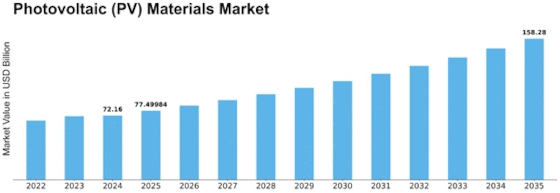




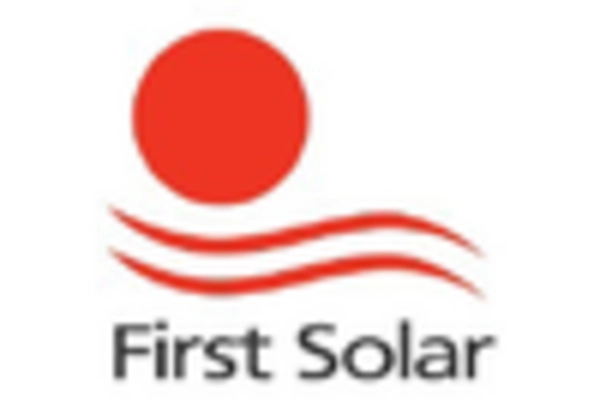
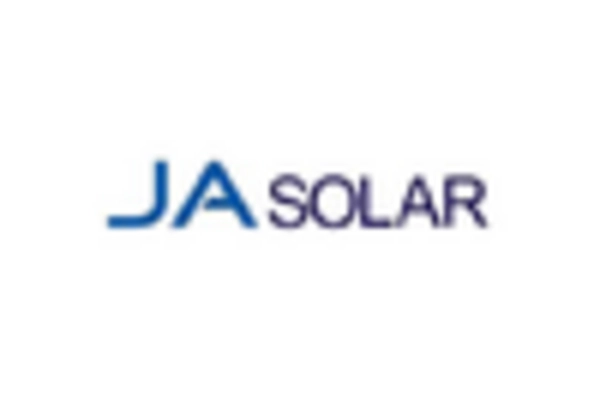
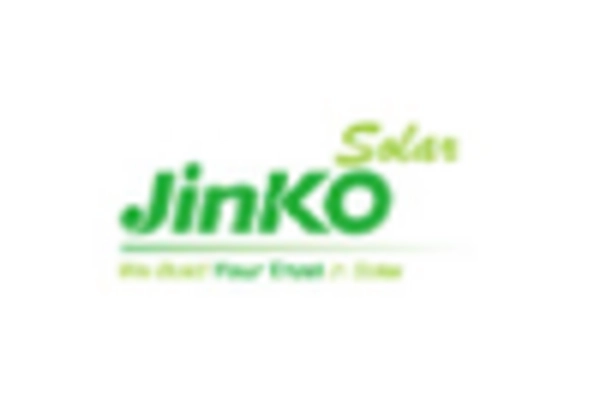
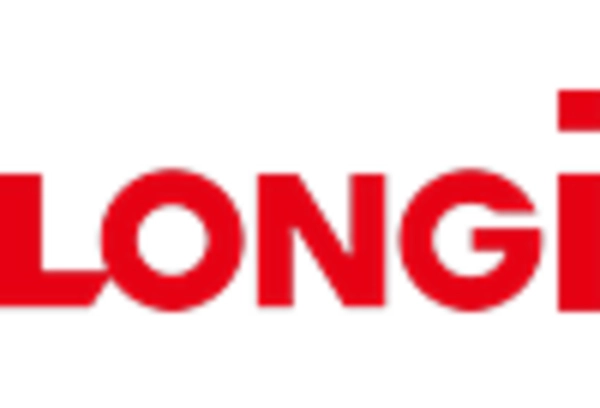


Leave a Comment